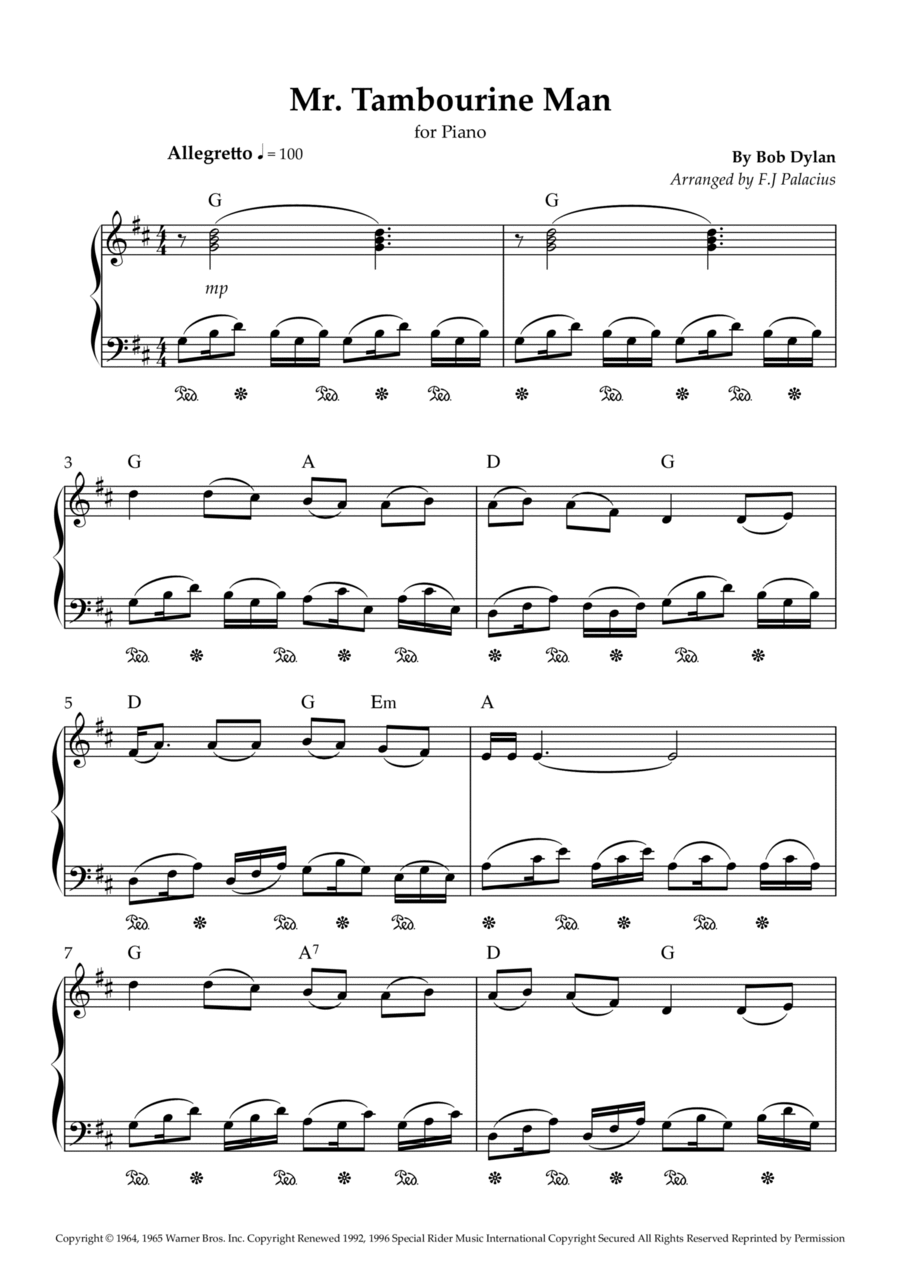Piano Solo - Level 2 - Digital Download SKU: A0.1425868 By Bob Dylan. By Bob Dylan. Arranged by J.Palacius. Folk,Multicultural,Rock,Singer/Songwriter,Standards,World. Score. 3 pages. Jhavilah #1006634. Published by Jhavilah (A0.1425868). Mr. Tambourine Man by Bob Dylan is a timeless classic that transcends generations with its poetic lyrics and mesmerizing melody. Released in 1965 as the opening track of Dylan's fifth studio album, Bringing It All Back Home, the song quickly became an anthem of the 1960s counterculture movement and remains a staple in Dylan's extensive repertoire.At its core, Mr. Tambourine Man is a surreal journey through the mind, filled with vivid imagery and dreamlike scenes. Dylan's lyrics evoke a sense of wanderlust and yearning for escape, as he addresses a mysterious figure - the Tambourine Man - who holds the key to unlocking a world of imagination and freedom.The tambourine, often associated with folk music and mysticism, serves as a symbol of the transformative power of music and creativity. Dylan's poetic verses invite listeners to join him on a transcendental voyage, where the boundaries between reality and fantasy blur, and the promise of liberation beckons.Musically, Mr. Tambourine Man captivates with its simple yet enchanting melody, driven by Dylan's distinctive vocal delivery and accompanied by acoustic guitar. The song's gentle rhythm and ethereal atmosphere create a sense of ethereal longing, perfectly complementing the introspective nature of the lyrics.Over the years, Mr. Tambourine Man has been covered by numerous artists, further cementing its status as a folk-rock classic. From The Byrds' iconic jangly rendition to interpretations by artists spanning various genres, the song's enduring appeal lies in its universal themes of escapism, inspiration, and the transformative power of music.In essence, Mr. Tambourine Man stands as a testament to Bob Dylan's unparalleled ability to craft songs that resonate deeply with audiences across generations. Its poetic lyricism and timeless melody continue to captivate listeners, making it a cornerstone of not only Dylan's illustrious career but also the broader landscape of popular music.
